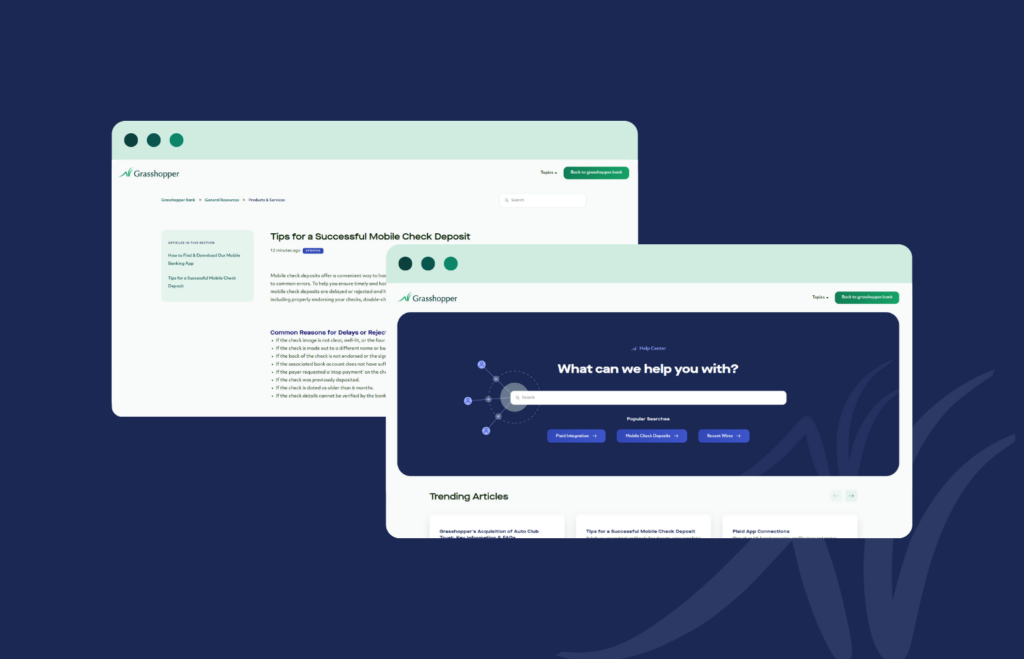As we turn the calendar to a new year, we find ourselves in a unique, rapidly evolving period for digital banking. With new developments in financial technology, banking, small business, venture capital and private equity springing up regularly, we spoke with a few of our team members for insight on what we can expect to see this year.
Overall, our team is optimistic about the year ahead and inspired by the opportunities that exist in digital banking. Powered by high deal volume and continued allocation from investors, the fintech market remains a strong and critical sector. We’re also excited to see steady growth in the use of hyperpersonalization, with banks continuing to forge fintech partnerships to deliver a superior client experience. Read on to get a full lay of the land for 2023, or click below to see what we’re thinking about particular topics!
Topics: General Market Conditions | Small Business Banking | SBA Lending | Hyperpersonalization | Banking-as-a-Service (BaaS) | Venture Banking
General Market Conditions
Will digital banks survive the elevated interest rate/inflation stress test they’re undergoing right now?
- Deposits and diversification are key
- “Yes. We’re going to have to live with a slowdown in the economy, but both businesses and consumers are better prepared for a downturn than they were in 2008. Those that keep a diversified portfolio, look for opportunities to insulate risk, and find sources of deposits will thrive. Those reliant on the secondary market for asset sales will struggle.” – Mike Butler, President & Chief Executive officer
Small Business Banking
2022 began with a lot of hype around digital banks entering the small business market, but questions emerged as the year went on. What do digital banks need to do to find success with small- and medium-sized (SMB) clients?
- It starts with a superior client experience
- “For SMBs, the experience has to be frictionless. We see value in creating an amazon-like platform and partnering with fintechs to offer tools and resources that can help them better manage their day-to-day tasks, as well as provide access to capital when they need it. That’s the tricky part, especially during these periods of time.” – Mike Butler, President & Chief Executive Officer
- Cash flow will be top of mind
- “As recession looms, the trend of SMBs adopting new technology will remain strong and cash flow will be top of mind, so it will be important for financial institutions to provide effective, user-friendly tools to help owners better manage their finances and stay on top of their cash flow. The ability to speak to an expert or banking partner through various digital channels will also be critical, especially in a recession-based environment.” – Danielle Kane, Director of Small Business Banking
How important will having a trusted banking partner be for SMBs in an uncertain economic climate?
- Personalized partnerships will lead the way
- “Having a banking partner that fits their business and technology that works for them has already become more of an expectation than a trend in recent years, so banks will be forced to adapt and innovate in order to keep up with the demands of next generation SMBs. Banking is no longer one-size-fits-all. Within the past couple of years, most SMBs have invested in digital toolkits to meet consumer demands, creating new revenue streams and improving their own customer experience. In 2023, SMBs will expect their banking partner to be able to handle the complexities of these new technologies and provide a personalized digital banking experience to meet their needs.” – Danielle Kane, Director of Small Business Banking
SBA Lending
Do you have any predictions for SBA Lending in 2023?
- The first half of the year will be critical
- “I think the first and second quarters are going to tell most of the story about how small businesses are doing. The general sentiment for consumers is: ‘I can’t spend.’ It’s too expensive right now. Once tax returns come in, we’ll have a really good fix on what industries have been hit the hardest through this inflationary jump and interest rates increase.” – Shane Pierson, SBA National Sales Manager
How are you seeing small businesses react to economic inflation? Are SMBs taking out loans to cover inflation-related expenses?
- Acquisition loans are on the rise
- “In this environment, there’s an increase in baby boomers and other small business owners wanting out, so they are willing to sell their business as they think about succession, opening the door for acquisition loans. The organic move that happens with that is you get more business owners wanting to sell and investors with a lot of liquidity held throughout the year looking for the right time to scoop up deals. This reset in business ownership of company balance sheets through business acquisition will help SBA and SMBs in particular.” – Shane Pierson, SBA National Sales Manager
- SMBs are looking to expand
- “We haven’t had many people calling or requesting to get a working capital loan for bandaids. It’s not a common ask for us. What we are getting is people who have identified new opportunities to make more money, more profitable moves, expansion and wanting capital to reposition businesses in an alternate direction.” – Shane Pierson, SBA National Sales Manager
Hyperpersonalization
A recent study shows 66% of financial institutions aren’t using hyperpersonalized tools. How widespread will these tools become in 2023?
- Slow but steady growth
- “I think we will see growth here, but I’m not sure I would predict this to become widespread in 2023. As banks see deposit run off and increased competition in 2023, hyperpersonalization will become a reasonable tactic to counter that trend. I would anticipate large banks and regional banks will leverage this more than community banks.” – Chris Mastrangelo, Chief Compliance Officer
- FIs will need new strategies
- “I believe we will get much closer to half of all financial institutions actively using hyperpersonalized tools, or considering using them. The deposit and loan landscapes over the next year are expected to be more challenging, and FIs will need to be exploring new ways to target prospects, and maximize their relationship with existing clients.” – Luther Liang, Director of Product
Can we expect more financial institutions to begin developing fintech partnerships to innovate areas in data such as risk in 2023? Why or why not?
- Regulatory concerns may create pause
- “Indications are that there are a lot of new community banks doing their due diligence on if/how to adopt this strategy. I believe the regulatory environment will be viewed as a barrier to entry for most considering becoming a new ‘partner bank’. I think we will see a resurgence of this in 2024 as deposit pressures mount on CBOs and the regulatory impact becomes more clear.” – Chris Mastrangelo, Chief Compliance Officer
- Risk evaluation will drive adoption
- “Risk is one of the hottest areas in fintech right now. In a cooler market, risk tends to come to the forefront, along with the data that you will need to make intelligent decisions about your client base. Fintechs are actively exploring new, realtime, API-driven and proactive models for risk management – these new ways of approaching data will have a lot of FIs looking to explore partnership opportunities.” – Luther Liang, Director of Product
Banking-as-a-Service (BaaS)
What is the next step for embedded finance, beyond what we’re already familiar with (e.g. managing your bank account on your phone)?
- Increased regulatory scrutiny will determine winners
- “As the Banking-as-a-Service and embedded finance markets grow, we expect (and welcome) increased regulatory scrutiny, which may cause some API partners and/or financial institutions to exit or pull back plans for this market. For others, it will enable them to get stronger and improve on their current offerings.” – Chris Tremont, Chief Digital Officer
Venture Banking
What impact will the recent slowdown in venture capital funding have on the tech banking industry?
- Fintech market remains strong
- “Although deal volume & total fundings in the U.S. fintech sector have declined year over year and valuations are continuing to experience a reset, 2022 numbers are higher than 2020 as fintech remains a critical and active sector, especially within the early stage segment. Despite current headwinds, innovation is foundational to the broader economy; as such, creative ideas will continue to underpin new successful companies, no matter the micro-market conditions.” – Barbara Fleming, Head of Venture Banking
- Significant dry powder will fuel VC activity
- “While late-stage valuations have taken a significant hit in 2022, seed and early-stage valuations have remained at the elevated levels achieved in 2021. Though there has been a slowdown in deal count at these stages, momentum from the market growth in recent years continues. A record number of closed funds and the high amount of dry powder ($290.1B) are likely to help seed and early-stage venture, as a high number of investors remain in their new investment period.” – Barbara Fleming, Head of Venture Banking
How can venture-backed small businesses and startups better manage their money as funding tightens?
- Investors will flock to quality
- “Investor fundraising and fund formation continues to be solid, however, skittish investors may pivot or delay new commitments. Secondary and Credit Funds will provide a funding path for certain companies, and ‘flight to quality’ will be the VC focus in 2023 – well-priced deals in companies with responsible capital management, reasonable valuations, and a path to profitability. With debt and equity becoming more expensive (and potentially more challenging to obtain), companies will have fewer or less frequent large capital infusions. As a result, companies should plan to extend their runway and manage burn rates through cash management and internal efficiencies while keeping a close eye on profitability.” – Barbara Fleming, Head of Venture Banking



